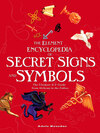Kitabı oku: «The Element Encyclopedia of Secret Signs and Symbols», sayfa 6
HEADGEAR
Headgear immediately identifies the status of the owner. The crown, for example, is an immediate recognition of royalty. People in authority wear peaked hats. The beggar goes “cap in hand.” Additionally, headgear itself indicates a relationship with the divine, since the top of the head is effectively the first point of contact with the spirit that descends from above. The symbolic nature of headgear is altogether different from its practical usage. In temples, churches, and other holy places, the feet might be bare but the head is covered as a sign of modesty.

THE CROWN
The open crown, coronet, tiara, or diadem has no practical secular purpose; indeed, the heavier crowns that belong to the sovereignty can be headachingly heavy. The crown is a circle, symbolizing the idea of immortality and eternity, but with the added dimension of a connection between the spiritual and material that is cemented by the ritual of coronation itself, which signifies a blessing, benediction, or union with the divine power that comes from above. Crowns traditionally feature jeweled “rays” signifying Sun beams, an allusion to illumination in all senses of the word.
For the Ancient Egyptians, only pharaohs and deities were permitted to wear the crown. The double crowns of the Pharaohs consisted of the white conical miter that represented Upper Egypt, surrounded by the red encasement of Lower Egypt. The serpent symbol called the Uraeus, again worn only by pharaohs, was incorporated into this sacred crown.
The pope wears a triple crown, or Triregnum (see Papal symbols). The three parts symbolize different aspects of the Catholic faith and of the papal role.
The crown is not always made of princely materials. The crown of laurels is still given as a sign of victory, and for Romans, the highest accolade for a soldier was to be given a crown made of lowly grass. The Corona Graminea signified the ownership of the territory, the right to the land on which the victory had taken place.
The feathered headdresses of Native Americans not only signify the status of the wearer, but the feathers themselves signify the different qualities of the birds they belong to. The most valued of all is the eagle feather. These headdresses epitomize the crown as a Sun symbol.
THE HAT
Which single factor is shared by the old-fashioned policeman’s helmet from the UK, medieval Jewish hats, the papal Triregnum, and the traditional witch’s hat? They all have a tall, conical shape. This has the effect of making the wearer taller than anyone else, more noticeable, and therefore more authoritative. This kind of hat is also a phallic symbol. In addition, the hat of the witch or wizard contains the essence of her magical power in the form of a spiral of energy.
SKULLCAP
Orthodox Jews wear the skullcap (also known as yarmulke or kippah) at all times; it is stated in the Torah that no man should walk more than four paces without the head being covered. This is because of the belief that the head should always be covered in the presence of God, and since God is omnipotent, then it makes sense that the yarmulke is worn at all times.
The yarmulke is not only a recognizable symbol of the faith, but covering the head is in itself a sign of respect for, and fear of, God. Many men also cover their heads for the same reasons.
Covering the head as a sign of respect for God is not restricted to the Jewish faith, although many people tend to restrict this practice to the times that they are actually in the place of worship.
HOOD
The wearing of a hood is sometimes viewed with suspicion, because it masks the face of the wearer. Therefore, the hood is a symbol of invisibility, of disguise, of secrecy, and tends to have negative connotations because we assume that the wearer has reason to conceal him- or herself. The figure of Death, with its scythe, often wears a hood, alluding to the fact that no one knows what form death will take.
HELMET
Like the hood, the helmet is a symbol of invisibility. It also denotes power and invulnerability. The Greek King of Hell, Hades, wears a helmet, and epitomizes all these powers. The covered-face helmet shares many of the same qualities as the mask.
KHALSAS
The five Khalsas are the dress rituals of adherents to the Sikh faith, and signs by which they can be recognized. The five Khalsas are:
1 Kesa—this is uncut hair. The hair remains uncut as a reminder that harm must not be inflicted upon the body. Male Sikhs wear the turban as an article of faith, and it also makes a practical garment to cover and contain the hair.
2 Kacha—this is a particular kind of undergarment as a symbol of marital chastity. Men and women wear similar garments.
3 Kanga—a wooden comb, symbolizing tidiness and cleanliness.
4 Kara—a steel bangle, which serves as a reminder of the truth and of God.
5 Kirpan—a dagger, for ceremonial use only, and a reminder to protect those who need it.
The Khalsas are sometimes referred to as the Five Ks.
ROBES
Nuns, monks, and priests of all persuasions wear the plain robes called “habits”. As well as acting as a kind of uniform, the habit also symbolizes the rejection of material values in favor of spiritual virtues. Generally colored gray or brown, the wearer no longer has to worry about a choice of clothes since external appearances do not matter. Effectively, the habit removes the individual personality. The sackcloth robes worn by ascetics are an extreme statement of the renunciation of worldly appearance, often worn as a penance.
Robes in general signify the rank of the wearer, and because they are distinctly different from everyday dress, they tend to be the preferred dress of spiritual or religious people. In China, the Imperial Robes were very ornate and carried specific symbolism as a part of their design. The round collar was the Heaven, the square hem, the Earth; the wearer of this robe was therefore an intermediary between the two. Latter-day druids of some orders wear green robes to signify the bardic grade, blue for the ovate grade, and the fully initiated druid wears white robes. Indeed, pilgrims of all faiths, including Buddhist, Muslim, and Shinto, wear white robes. Buddhist monks and followers of Hare Krishna wear robes of the sacred saffron color.
The robes of a shaman, like those of the wizard, are covered in magical signs. They are also decorated with feathers (symbolic of transcendence) and the pelt of the animal whose spirit they wish to connect with.
SHIRT
A shirt is a symbol of protection. To “lose one’s shirt” means to relinquish the last vestige of dignity as well as material wealth. However, to give “the shirt off your back” is a gesture of great generosity, indicating a willingness to give away the last of your material possessions. The “hair shirt” is an uncomfortable garment worn by penitents who want to self-inflict punishment.
The tunic is an earlier form of the shirt. The Cathars used it as an analogy for the human body. When they said that fallen angels wore tunics, they meant that they were made of flesh.
VEIL
The veil symbolizes a distinct separation between two states of being, physical objects, or concepts. However, the object effecting this separation is apparently flimsy. It must be remembered that this is a two-way separation; the nun that “takes the veil” to become a Bride of Christ separates herself from the world, but also removes the worldly from her relationship with the spiritual.
The Greek word for veil is “hymen.” The veil that is lifted to reveal the face of the bride at her wedding not only symbolizes her new status, but also alludes to the tearing of the hymen which is the physical outcome of a marriage. The word “revelation” comes from the Latin revelatio, to draw back the veil.
Penetrating a veil, therefore, is symbolic of initiation; hidden knowledge is often described as “veiled.” This veil protects us too; in the same way that the light from the Sun can illuminate, it can also dazzle or even blind us if it comes too close.
The Qu’ran says that women should be addressed from behind a veil. The hijab is the physical manifestation of this idea. Although the hijab has been interpreted by some as a sign of oppression, devout followers of Islam would argue that not only is the wearing of this veil instructed by the Prophet, but also gives the woman a great level of freedom. Here, a veil of misunderstanding separates two ideas and cultures.
According to Buddhists, Maya is the symbolic veil that separates pure reality from the illusory nature of the world in which we live.
COLOR
Despite the fact that colors have an essential part to play in symbolism and the understanding of it, they are, nevertheless, frequently overlooked. Colors are proven to have a profound effect on the human psyche and on our moods. They resonate with the elements, the directions, the seasons, the planets, and astrological signs, as well as holding huge significance in their own right, for example, in the Tarot. Colors, and particular shades of them, confer an immediate identity and make a strong statement. For example, in the green, purple, and white of the Suffragettes (green for hope, purple for dignity, and white for purity), or in the red and white stripes of the old-fashioned barber’s pole (where the white represented the color of flesh and the red was the blood sometimes drawn by the cut-throat razor).
Territories use colors to represent themselves on their flags. Sometimes the reasons behind these colors have unexpected origins, such as the bright orange that is so strongly linked to the Netherlands; more of this later.
The simple colors used by children generally represent the most elemental meanings; blue for the sea and the sky, green for growth, brown for the Earth, yellow for the Sun.
The significance of colors is proven by the high value that our ancestors placed on certain plants or substances that could be made into dyes, such as the Imperial Purple of Rome that was produced from a mollusk that was valued more highly than gold, or the saffron crocus that produced the sacred color of the same name. Prior to the development of chemical dyes, the creation of colors that did not fade in the Sun or wash away was a combination of art, science, and magic, akin to an alchemical process. The impact of the Sun shining through stained glass, painting the interiors of churches with living colors that shimmered and danced, in a medieval world where color was often a privilege of the wealthy few, can only be imagined. Warriors in Ancient Britain daubed themselves in blue pigments in order to look more fearsome to their enemies. The power of red was once so powerful that corpses were daubed in red ocher in the belief that the color had the same life-giving properties as blood.
The seven colors of the rainbow—which break down into 700 shades that are visible to the naked eye—are associated with the seven planets, the days of the week, the Seven Heavens, and the seven notes of the musical scale.
BLACK
SYMBOLIC MEANINGS: night, the absence of light; mourning, sobriety, denial; authority; perfection and purity; maturity and wisdom.
Although it’s the opposite of white, both shades are, in fact, due to an absence of color, and technically speaking black is not a “color” at all. This doesn’t stop it having a wealth of symbolic meaning.
Black often has negative connotations for the reason that it is the color of the night, or the absence of light. It doesn’t require a great leap of the imagination to extend this light/dark, day/night symbolism to good/bad. A fundamentally natural occurrence to do with the orbit of the Earth around the Sun, therefore, has had far-reaching consequences, resulting in fear, racism, superstition, and bigotry which even continues today simply because of skin color.
In the West, black is the color of mourning and funerals. In some cultures, white is used in this context, in which case it carries the idea of rebirth. Black, however, is not so sanguine. It is final, conclusive, the denial of life.
Despite the mirthless sobriety of black, it depends how you wear it. The “new black” is a term applied to anything that is in vogue, since black is also somehow dangerous and sexy as well as practical, therefore always fashionable as a color.
The “black sheep” of the family refers to the one who is a bit of a scoundrel, and the “black dog” means depression. Conversely, a black cat is a very lucky symbol in the UK and other parts of the world. A person who holds a black belt in any of the martial arts is considered to be at the pinnacle of their abilities, and indeed, in Japan, black is the color of wisdom, experience, and maturity. In this instance, black is a color of perfection, an idea shared by the Cathars who also saw black as a symbol of completion and purity.
Black is a secretive, mysterious color and used as such in rite and ritual. A polished black mirror provides a perfect, glossy surface for scrying or seeing into the future.
BLUE
SYMBOLIC MEANINGS: truth and the intellect; wisdom, loyalty, chastity; peace, piety, and contemplation; spirituality; eternity.
Blue is the color of the Heavens and is related to the fifth chakra. Blue is traditionally worn by the Virgin Mary, the very embodiment of all the qualities described above. Whereas the reds, oranges, and yellows carry with them a carnival atmosphere, blue is more sober, even somber, despite its many variations. If we’re “feeling blue” then we’re depressed or melancholy. And yet the bluebird is a universal symbol for happiness. The color has even given its name to a rich vein of music. The “blues” actually refers to “blue notes.” These are notes, either sung or played, that are pitched down a little for expressive purposes. An example is Billie Holiday’s heart-breaking rendition of “Strange Fruit.”
There’s something cool and detached about blue that gives rise to its reputation for spirituality and chastity. Above all, blue is the color of the sky. Like the sky, blue is infinitely spacious. It contains everything, and yet contains nothing. The color is therefore associated with ideas of eternity. When filmmakers and animators want to place a subject against a different background, they film against a blue screen since the color can be made invisible. In Jewish tradition the city of Luz, where the Immortals live, is also called The Blue City. Similarly, the mythical sacred mountain of the Hindus, Mount Meru, is constructed entirely of sapphire on its southern face and it’s this that is said to tinge the skies with blue.
To put any color out of context can have an alienating and often frightening effect. Knowing this, early British warriors daubed themselves in woad. These blue-skinned savages must have been an alarming sight for Roman soldiers.
Members of the aristocracy or the royalty are described as having “blue blood,” but why? The phrase originated with the Spanish, sangre azul, and refers to the pale-skinned Castilian ruling classes who prided themselves on never having interbred with darker-skinned races. Therefore, their blue veinous blood was plainly visible underneath the surface of their skin. There’s even a particular shade of blue that is meant to represent this color, called Royal Blue.
BROWN
SYMBOLIC MEANINGS: poverty, humility, practicality.
Brown is the color primarily associated with the Earth, soil, the raw element before it is covered with greenery. The word for earth, in Latin, is humus, which carries the same root as humility. Religious ascetics wear brown as a reminder of this quality and also of their voluntary material poverty.
GRAY
SYMBOLIC MEANINGS: sobriety, steadiness, modesty.
Gray is the midway point between black and white, and tellingly the “gray area” is an area of indetermination, indecision, or ambiguity. To be described as gray is rather less than flattering, since gray is such a subdued and neutral color, and implies that the person blends into the background. However, gray is also a color of balance and reasonableness and is the color used, in photography, to balance all others.
Because people’s hair turns gray with age, the word is often used to describe elderly people and is also a color of wisdom.
For Christians, gray is the color of resurrection and is worn when people are coming out of the full black of mourning as the midway point on the journey to other colors.
GREEN
SYMBOLIC MEANINGS: new life, resurrection, hope; the sea; fertility and regeneration; recycling, environmental awareness; a lucky color; an unlucky color.
Green is an amalgam of blue and yellow, and is the color of the fourth chakra. Green is the universal symbol for “Go!” to red’s “Stop!”
In common with yellow, there seem to be several anomalies in the symbolic meaning of green. To call someone “green” means that they are inexperienced or innocent and obviously refers to fresh young shoots, yet jealousy is also described as the “green-eyed monster.” This saying is actually Shakespearean in origin. In Othello, jealousy is described as being like the green-eyed monster, the cat, “which doth mock the meat it feeds on.” Probably the same origin gives us “green with envy.”
Green is a soothing, refreshing color, so it is interesting to discover why it’s sometimes believed to be unlucky. It’s still a statistical fact that fewer green cars are sold in the UK than any other color because of this superstition.
In the Middle Ages, green was meant to be the color of the Devil. He’s even depicted on a stainedglass window in Chartres Cathedral as having green skin and green eyes, strangely similar to a generally held belief about the appearance of Martians. In this sense the color denotes an alien, nonhuman, possibly threatening being; no surprise, then, that it’s the color of the Fairy Folk, and it might well be that the color is lucky or unlucky depending on their attitude toward you. If you dressed in green, it was believed that the fairies could claim you as their own.
In Islam, green is the color of paradise, and Mohammed has a green banner. Paradise actually means “garden,” and in the arid desert landscape of the Bedouin, any stretch of lush green land must indeed appear heavenly.
The epitome of the nature God in the Western world is the Green Man, the pre-Christian deity whose leafy face peeps out from bosky woods and verdant forests and reminds us that Mother Nature is supernal. However, the Green Man is not exclusive to the West. He also exists in Islam, as Al Kadir. Al Kadir is the patron of travelers, and he’s said to live on the very edge of the world where the oceans of Heaven and Earth merge. Be mindful if you meet Al Kadir that you should do as he tells you, however outlandish the instructions might be.
In alchemy, full of hidden meanings, the Green Lion itself has more than one meaning. It is a symbol for vitriol (sulfuric acid), which is created by distilling the green iron sulfate crystals in a flask. But the life-force itself was symbolized as the blood of the Green Lion, blood contained in a green vessel; this was a reference not to real, physical gold, but to Philosophers’ Gold, far more valuable and elusive.










